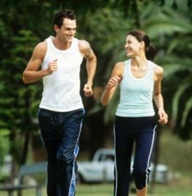 A man launched a Fun Run charity event aimed to generate funds and publicity for those suffering from asthma in Acton, a place where pollution is prevalent. He is blamed for the deaths of 10 asthmatic people who died during the event.
Mr. Charles Baker, the event organiser stated that his idea was “just a wheeze.” Over 200 people, mostly of which are asthma sufferers, joined the fun run event on Saturday. The runners ran for about three miles while German Shepherd and Rottweiler dogs chased them.
"It was a fun day out," said Mr. Baker, who was formerly in trouble for being involved in another silly event he organised in which he formed a wheelchair race across a rope bridge that crosses a valley.
"We have tried to get the police involved on a number of occasions, but they just say they can't arrest a man for trying to raise money for charity,” said Councillor John Peptalk against Mr. Baker. Peptalk said he was aware of Baker’s intolerance toward people who are gay, dark-skinned, or disabled.
Charles Baker apologised to the bereaved family of the 10 victims, and promised to initiate a petition against the companies whose products, including inhalers, did not succeed in keeping the asthmatic runners alive.
Currently, Charles Baker is planning a football match to generate funds intended for an anti-racism charity, wherein a team of white men will be dressed as gollywogs and will play versus the team of autistic prostitutes.
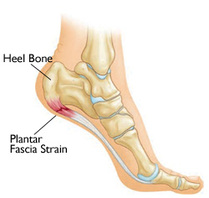 _It gives you the opportunity to have a good time and you might get hooked once you engage in this hobby. In spite of taking preventive measures to avoid injury, runners often get pains and aches. One of the common running injuries is the so-called ‘plantar fasciitis.’ Plantar fasciitis refers to a sore inflammatory state of the foot, largely due to extreme wearing of the plantar fascia, which holds the foot’s arches. Another cause of this injury could be biomechanical defects that stimulate malformed pronation. The pain is typically felt at the bottom of the heel, and is oftentimes most severe during the day’s initial steps. It is usually associated with extensive weight bearing periods and/or abrupt changes in activity or weight bearing. Weight gain, obesity, and jobs that necessitate a great deal of walking on tough surfaces, inactivity, as well as shoes with little or no support, are all affiliated with the inflammatory condition. Throughout the United Kingdom, plantar fasciitis was previously referred to as ‘a dog's heel’. The podiatrists of the United States commonly called it as ‘flip-flop disease.’ This circumstance oftentimes leads to a heel spur within the heelbone. In this state, it is not the spur that gives rise to the pain, but the condition itself. One of the treatments for this condition is to evade open-back shoes, flip-flops, sandals, and other shoes with no lifted heels. To relieve inflammation and pain, patients can take nonsteroidal anti-inflammatory drugs like aspirin.
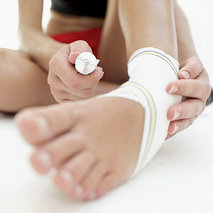 _ Running is a strenuous kind of sport that involves the muscular part of the body. During the running activity, most runners experience different injuries.
In order to prevent injury that you might sustain during the course of running, you must consider your health. Before venturing into running, consult first a doctor to examine your health and level of fitness. Determine how much your body can tolerate the stress that running can cause. Next, be aware that you must have the proper shoes and clothes when running. Wearing shoes that have lost their durability and cushioning may lead to new injury and may aggravate existing problems. You should also be conscious about your running style as this may also cause injuries. Consider also the surfaces that are appropriate for running so as not to overstrain the foot, legs, hips and back. While running, apply a sun-block cream to the skin or stay away from too much exposure to the sun. This may not strain the muscles but it can cause irritation to the skin. Good nutrition and a well-balanced diet should also be observed if you wish to run. The importance of eating foods that are high in carbohydrates to sustain the needed energy, and the importance of drinking lots of water to prevent dehydration, cannot be over-emphasised.
To prevent re-injury, rest and ease back into training with water running and cycling, or use an elliptical trainer. Remember that progress takes time and that overstraining is the main cause of injury.
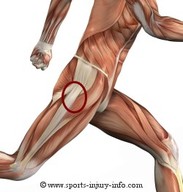 _Snapping hip syndrome is a physical condition characterised by a snapping feeling when the hip is extended or flexed. This may be accompanied by a popping noise and discomfort or pain. Through rest and less activity, the pain usually subsides. This kind of injury is commonly seen in runners, gymnasts, soccer players, horse riders, ballet and tango dancers. The injury is associated with other symptoms, such as audible snapping noise as the tendon of the hip moves from flexion to extension. Less than a 1/3 of patients feel the pain when snapping, but after the extended exercise, pain or discomfort may occur. Common causes include repetitive and physically hard movements, as well as heavy weightlifting or too much running that cause excessive thickening of the tendons in the hip region. If the condition is painless, there is no further worry or concern. Correcting the abnormalities is the goal of treatment in order to prevent recurrence. Self-treatment may also be administered, following the HI-RICE procedure: Hydration, Ibuprofen (medication given), Rest (to regain strength), Ice (cold compress to relieve swelling), Compression, and Elevation. These should be performed within 48-72 hours of the injury. If self-treatment does not work, consult a health professional. Other treatments and diagnostic procedures include ultrasound, MRI, injections based treatments, surgical treatment (if necessary), and physical therapy that will serve as rehabilitation after the surgery. In some instances, the rehabilitative measures take 6-8 weeks prior to the surgery and therapy.
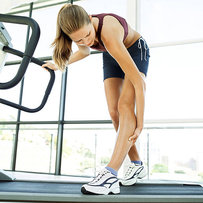 _Shin Splints is a term that commonly refers to the painful inflammation of the muscles around the shins. This condition is frequently caused by jumping and running, and it mends slowly. The medical name for Shin Splints is the medial tibial syndrome.
The symptoms of this condition are tenderness all over the shin, pains in the lower leg, swelling, pain in the feet or toes when bent downwards, and inflammation of the shin. Overpronation is one factor that usually induces shin splits. Pronation happens when a foot becomes flat when weight is employed. An ordinary foot flattens out slightly, which is normal in ordinary foot motion. Overpronation takes place when a foot gets overly flattened out, making the foot turn inwards.
There are a few tips to follow for athletes who suffer from shin splints. Use cold or ice therapy in the early phases, especially when it is extremely painful. This therapy helps reduce inflammation and pain. The lower leg muscles must be stretched, particularly the tibialis posterior, which is associated with shin splints. Put shock-absorbing innersoles in the shoes because it helps lessen the impact and shock transmitted to the lower leg, mostly when running on firm surfaces.
To detect the causes of this condition, a doctor may prescribe a bone scan or an X-ray. Bone scanning will determine the bone areas that point to probable stress fractures and other problems in the bones. Likewise, an X-ray can spot fractures and discover long stress fractures.
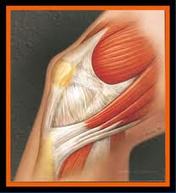 Patellofemoral syndrome is a softening of the patella (cartilage under the kneecap) that results in small areas of breakdown and pain around the knee. Rather than sliding easily above the knee, the knee cap rubs adjacent to the femur (the thigh bone) when the knee moves. The changes can vary from mild to complete corrosion of the cartilage. Chondromalacia patella, in technical terms, is the most usual cause of chronic knee pain. This syndrome usually occurs in female teenagers because the knee is subjected to extreme and unequal pressure due to their rapid growth and adults over 40 as part of the wear-and-tear process that in time leads to osteoarthritis.
You’ll know that you have this condition if you feel a mild discomfort in the inner knee area, like a vague sense of ‘tightness’ or ‘fullness’. Sometimes, if chronic indications are disregarded, the associated loss of thigh (quadriceps) muscle strength may have the leg to give out. In addition, an obvious lessening in quadriceps muscle mass and mild inflammation of the knee area may appear.
Treatment for patellofemoral syndrome involves improving the alignment of the patella during contraction of the thigh muscle. To minimise the pain, avoid activities that will irritate the kneecap, like jumping, running, going down the stairs, climbing, or prolonged sitting with knees in a bent position. Using ice and anti-inflammatory medications (such as Naproxen [Aleve] or Ibuprofen [Advil/Motrin]) could help. Cardiovascular conditioning may be maintained by pool running, stationary bicycling , or swimming (flutter kick).
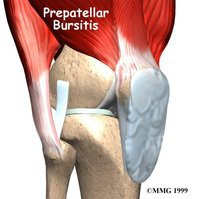 Hip Bursitis is the most common cause of hip pain. Generally, it is a non-infectious condition caused by the inflammation of closed fluid-filled sacs called bursae. A major indication of hip bursitis is sharp pain at the hip, which usually extends through the thigh area. Normally, the pain is worse at night.
There are two types of hip bursitis: trochanteric bursitis that causes a dull, burning pain in the outer hip, frequently made worse by stair climbing and excessive walking; and ischial bursitis that causes a dull pain in the upper buttock area and occurs when climbing uphill and during prolonged sitting or squatting.
Occasionally, hip bursitis is diagnosed by a comprehensive physical examination to the tender areas at the hip. Additional tests such as X-ray, MRI, and bone scanning are performed to rule out other possible conditions or injuries.
Initial treatment for hip bursitis doesn’t require surgery; a person suffering from bursitis can experience relief with modification of activities and simple lifestyle changes, such as avoiding activities that might worsen the condition. If symptoms persist, anaesthetic and non-steroidal anti-inflammatory drugs (NSAIDs) are used to control the pain and inflammation. Surgery is only done when bursae remain inflamed. Removal of the bursae does not affect the hip.
Hip bursitis can be prevented by avoiding activities that make the bursa inflammation worse. Avoid monotonous activities that put pressure on the hips. Stretching exercises, weight reduction, and wearing properly fitted shoes are advisable to patients with hip bursitis.
|







 RSS Feed
RSS Feed